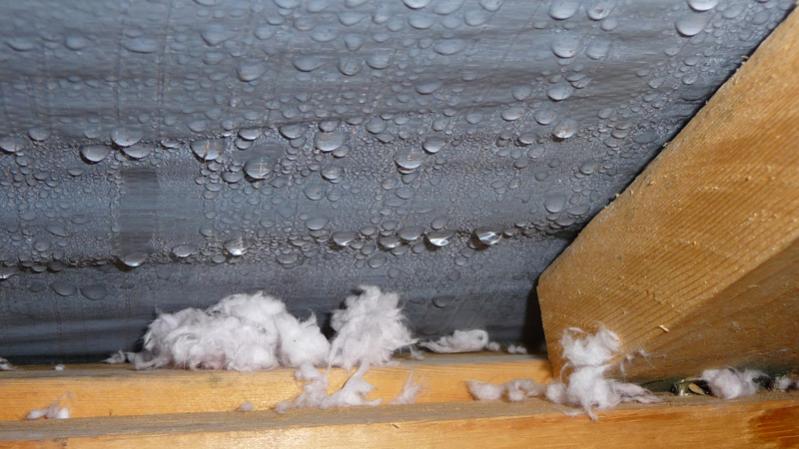It’s that time of year when many of us venture into our lofts to rescue the Christmas decorations from under some suitcases.
And, with the weather now colder, and the heating finally on, many of us may be a bit shocked to discover that our loft spaces are not as dry as we might have expected. In extreme cases, you may see visible droplets of moisture on the sarking felt or roofing membrane – a bit like rain drops. More commonly, it might be mould growing on the underside of your roofing membrane that gives the game away. Or perhaps the air just seems a bit clammy, and the moisture is a bit less obvious. But a moisture meter stuck into the roofing timbers will often reveal the problem – damp roof timbers. And elevated levels of moisture here is a real problem, not least because it can leave your roof structure at risk of rot or woodworm attack. These are problems that can quickly get expensive to fix.
So, what is going on here? Well, quite simply, it’s about the balance between moisture and ventilation. And sometimes, especially at this time of year, that balance gets out of whack.
Strange as it might seem, moisture from hot showers, cooking and even from drying washing in your house can very easily make its way all the way up through your house and into your loft. And as the warm moist air hits the cold parts of your roof above the loft insulation, that moisture can very quickly condensate on the roofing felt and on the timber roof structure. Left unchecked, that can create big problems.
So, what should you do? Well, two things, and they are both relatively straightforward.
Firstly, stop the moisture from getting up to the loft in the first place. If you have mechanical extraction in your bathroom and kitchen, make sure it is used. If you don’t have mechanical extractor fans, consider getting them fitted. Yes, the fans can be a bit noisy and annoying. But, in the end, noise will do a lot less damage to your house than a soggy loft will (and of course, quiet extractor fans are available). Try to minimise drying washing indoors and, if you do, do it somewhere near an open window or in a room with an extractor fan. This approach means your loft will have less moisture to deal with. And, by the way, as an added benefit, there’ll be less condensation on your windows too.
Secondly, loft ventilation. It’s perhaps not very well known that lofts need airflow and ventilation to remain healthy. Over time, the ventilation system put in place by the original builder often gets compromised as people remove soffit vents or push lots of insulation down into the eaves. And sometimes ‘breathable’ roofing membranes are just not that breathable. So if your loft lacks ventilation, then you need to create some more. That could be as simple as fitting felt lap vents. These are very cheap, readily available bits of plastic that will open up the gaps at the points your roofing felt overlaps, promoting more airflow. Where that’s not enough to solve the problem, it could be you need a contractor to fit ventilator tiles, or airbricks in your gable walls. Or perhaps new soffit vents are the answer. There are lots of options, and happily none of them are too expensive. What they all have in common is they will create airflow through your loft, and that in turn will carry the moisture out and away.
Balance, restored.
If you are concerned that you have a problem with roof space condensation, or if you are purchasing a property and want to be sure that the roof structure – and indeed the rest of the house – is in good order, then please contact Stephen Michael Surveying for a free, no obligation conversation and quotation.

